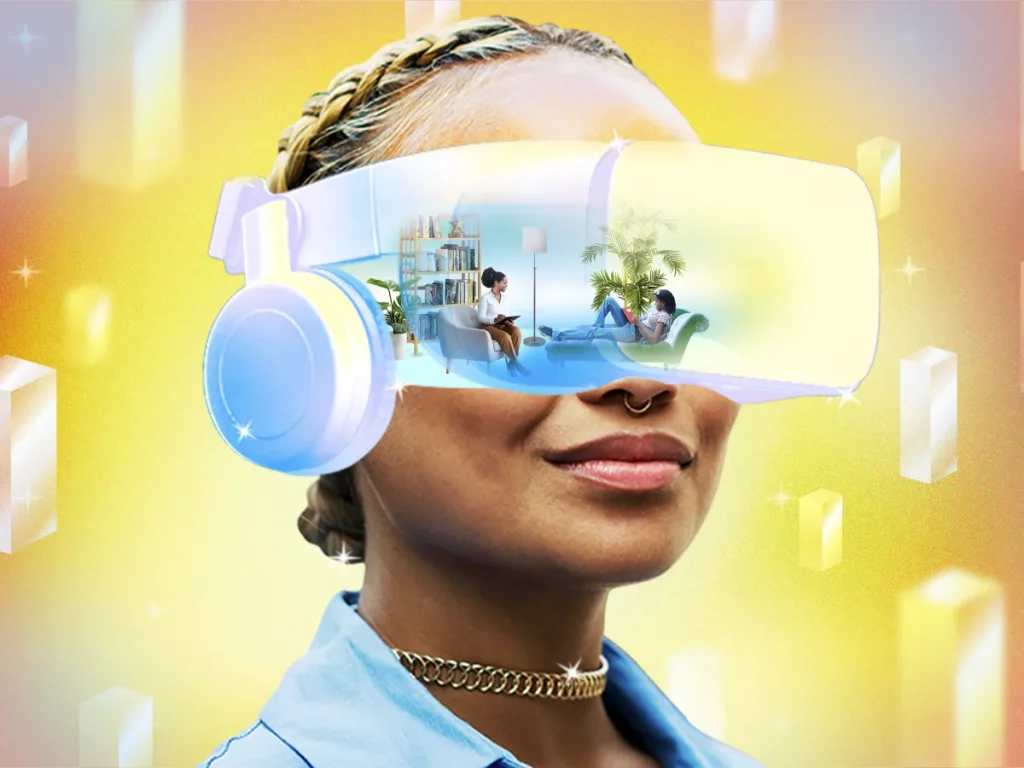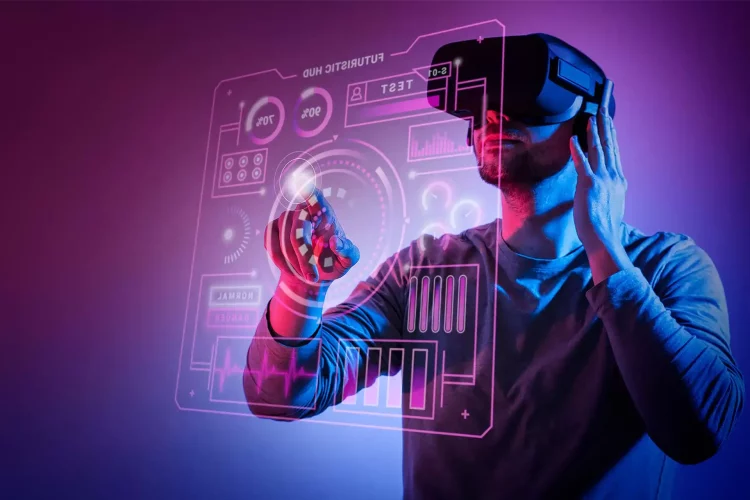1. The Beginning of a Virtual Dream
For decades, humankind has been fascinated by the possibility of stepping into a world that exists only in data. From the science fiction visions of the 20th century to the practical prototypes of today, Virtual Reality (VR) has evolved from a distant dream into an increasingly tangible, transformative force. Yet, what truly defines this evolution is not the hardware or the graphics—it is interaction. VR interaction is the bridge between the physical and the digital, between imagination and experience. Without it, virtual reality would be little more than a passive movie. With it, it becomes a living, responsive environment.
The earliest experiments in VR interaction were primitive, even clumsy. In the 1960s, computer scientist Ivan Sutherland built the “Sword of Damocles,” often considered the first VR system. Users could move their heads and see wireframe shapes change perspective accordingly. Though heavy and uncomfortable, it introduced the revolutionary idea that humans could interact with a digital space through physical movement. Over the next half-century, researchers and inventors improved on this concept, adding motion tracking, haptic gloves, and eventually full-body sensors. The trajectory was clear: to make interaction in virtual space feel as natural and intuitive as interaction in the real world.
2. The Psychology of Presence
At the heart of VR interaction lies a powerful psychological concept—presence. Presence is the subjective feeling of “being there” in a virtual environment. It is what makes a user forget, even momentarily, that they are standing in a room wearing a headset. Achieving this illusion requires more than realistic visuals. It depends on the coherence of sensory feedback and the user’s ability to manipulate and influence the virtual world meaningfully.
Studies in cognitive science reveal that the human brain quickly adapts to new sensory mappings if feedback is consistent and instantaneous. For example, if a user’s hand movement in the real world corresponds perfectly to a virtual hand’s motion, their brain begins to treat that digital hand as part of their body. This phenomenon, known as embodied cognition, is fundamental to VR’s success. It explains why VR interaction is not merely about clicking buttons or using controllers—it is about extending human perception and agency into synthetic environments.
However, presence can easily be broken. Latency, mismatched motion, or unrealistic physics can disrupt the illusion, reminding users that they are inside a simulation. Thus, the quest for perfect VR interaction is as much a psychological challenge as it is a technological one. Developers must understand how humans perceive and process multisensory information to craft truly immersive systems.
3. Technologies That Shape VR Interaction
The contemporary landscape of VR interaction is shaped by a confluence of cutting-edge technologies:
- Hand Tracking: Modern systems like Meta Quest and Ultraleap use cameras and AI algorithms to track users’ hand movements with impressive accuracy. This enables gesture-based interfaces, allowing users to grab, point, or sculpt virtual objects naturally.
- Eye Tracking: Eye movement data not only enhances realism (through techniques like foveated rendering) but also serves as an input method. Users can select menu items or control virtual objects simply by looking at them.
- Haptic Feedback: Vibration motors, pressure sensors, and even temperature modulators simulate the sensation of touch, bringing a new dimension to interaction. Advanced prototypes such as haptic suits can make users feel impacts, textures, and resistance.
- Spatial Audio: Sound is crucial for immersion. 3D audio engines simulate how sound waves interact with the environment, providing depth and directionality that reinforce spatial awareness.
- Artificial Intelligence: AI-driven interaction models allow virtual characters to respond dynamically to user behavior, enabling natural dialogue, adaptive storytelling, and more personalized experiences.
Each of these technologies enhances the realism and intuitiveness of VR interaction. Together, they blur the boundary between the real and the virtual.
4. From Entertainment to Everyday Application
The popular image of VR is often tied to gaming, but its applications in interaction design go far beyond entertainment. In education, VR enables interactive learning experiences that engage multiple senses. Students can explore ancient cities, dissect virtual organisms, or conduct dangerous chemistry experiments safely. The interactive element transforms abstract concepts into concrete, manipulable forms.
In medicine, VR interaction assists in surgical training, rehabilitation, and mental health therapy. Surgeons can rehearse complex procedures in virtual environments, gaining tactile familiarity without risk. Patients recovering from stroke or injury can use VR to retrain motor functions through interactive exercises. In psychotherapy, controlled virtual exposure therapy helps patients confront phobias or trauma under supervision.
In architecture and design, VR allows clients to walk through unbuilt spaces, interact with materials, and provide feedback before construction begins. Similarly, remote collaboration platforms now use VR to enable teams separated by geography to meet “inside” shared digital workspaces—gesturing, annotating, and manipulating objects together in real time.
These examples demonstrate that VR interaction is not merely a technological novelty but a new mode of human expression and communication.

5. The Challenge of Natural Interaction
As powerful as modern VR interaction systems are, they remain imperfect. Many users experience a “disconnect” between physical effort and virtual feedback. For example, reaching out to grab a virtual object feels unsatisfying if one’s hand closes on empty air. Similarly, walking in VR while standing still in reality requires awkward workarounds, such as teleportation or treadmills.
The ultimate goal of VR interaction design is to make the digital world feel physically real—to trick the brain into believing in the weight, texture, and resistance of virtual matter. Achieving this requires deep integration of haptic physics, motion tracking, and neurological research. Some experimental systems now explore neural interfaces, which read brain signals to predict movement intention or stimulate sensory responses directly. Such technologies hint at a future where VR interaction bypasses mechanical input entirely.
6. Ethics, Accessibility, and the Human Factor
Every new medium brings ethical challenges, and VR is no exception. Interaction in virtual worlds raises questions about identity, consent, and psychological well-being. For instance, when users embody avatars vastly different from themselves, how does this affect self-perception and empathy? Can virtual violence desensitize users or alter behavior? These issues require ongoing study and thoughtful regulation.
Accessibility is another vital concern. Many current systems assume able-bodied users with full range of motion and depth perception. Designers must develop inclusive interfaces for users with disabilities—perhaps through voice commands, adaptive controllers, or gaze-based input.
Lastly, prolonged VR interaction can induce cognitive fatigue or motion sickness, particularly when sensory feedback is inconsistent. Striking the balance between realism and comfort remains an ongoing design challenge.
7. Toward a Shared Virtual Society
The evolution of VR interaction is steering humanity toward a new social paradigm—the metaverse, a persistent network of interconnected virtual spaces. Here, interaction transcends personal experience and becomes communal. People can socialize, trade, create, and collaborate in shared digital worlds governed by new economic and cultural norms.
In this emerging ecosystem, interaction is the foundation of social presence. Hand gestures, eye contact, and body language—once invisible online—are reintroduced through avatars that mirror real-world expression. The implications are profound: VR could restore the richness of face-to-face communication to digital interaction, fundamentally reshaping remote work, education, and culture.
However, the metaverse also risks deepening inequality if access remains limited to affluent users or corporate-controlled platforms. Ensuring openness, privacy, and equitable participation will define the moral dimension of VR’s future.
8. Conclusion: Toward the Infinite Interface
Virtual reality is not merely a display technology—it is a new sensory language. As interaction grows more natural, VR will become a seamless extension of human cognition and creativity. We are witnessing the dawn of an “infinite interface”, where imagination defines the boundaries of experience.
The history of VR interaction is thus a story of human aspiration: the desire to transcend physical limits, to make thought tangible, and to reshape reality through perception. In the coming decades, as hardware miniaturizes, AI personalizes, and neural technology matures, the barrier between real and virtual will dissolve almost completely. What remains will be not two separate worlds—but one continuous spectrum of existence, mediated by interaction.
In the end, VR interaction is not just about touching the virtual. It is about discovering how the virtual can touch us back.











































